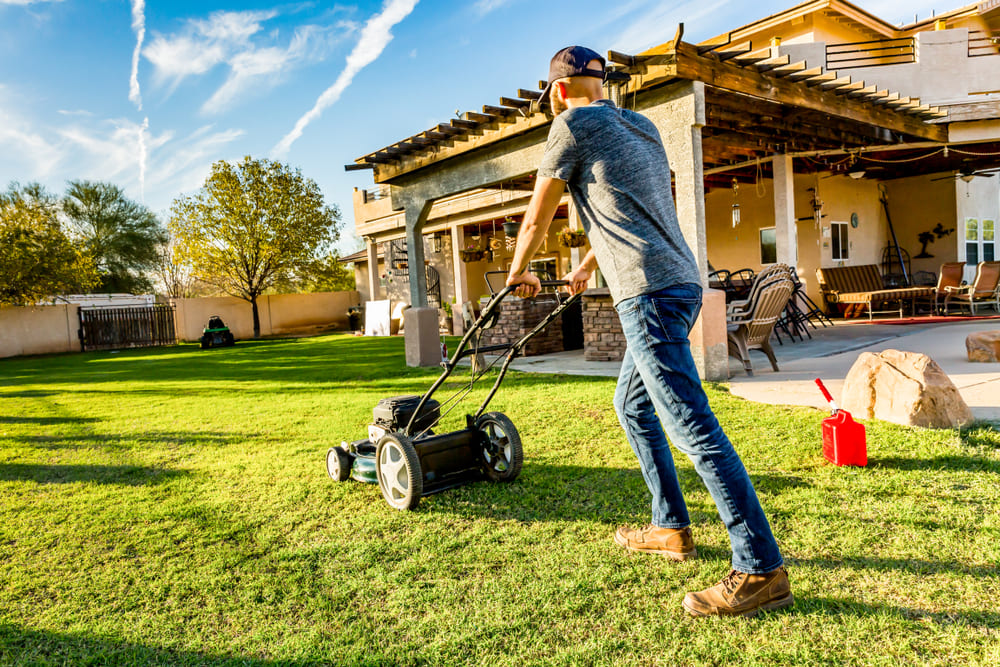Subscribe and save 17% with an annual subscription. Learn more.
As the Australian summer approaches, so do the intense heatwaves that can take a toll on your lawn. The combination of high temperatures, dry winds, and prolonged sunlight can lead to stress, dehydration, and damage to your grass. However, with the right lawn care strategies, you can prepare your lawn to withstand the scorching Aussie summers and keep it looking lush and healthy. In this guide, we’ll explore essential lawn care tips for beating the heat and maintaining a resilient lawn during the hottest months.
Australia is known for its extreme summer temperatures, and lawns can face several challenges during heatwaves:
Effects: High temperatures and dry winds increase evaporation rates, causing grass to lose moisture rapidly. Dehydration can lead to wilting and browning.
Effects: Prolonged exposure to extreme heat can cause heat stress in grass, weakening its defenses and making it more susceptible to disease and pests.
Effects: Hot, dry conditions can cause soil to become compacted, reducing root penetration and nutrient absorption.
Effects: Heat-stressed lawns are more vulnerable to pests and diseases, which can exacerbate damage during summer.

Selecting the right type of grass is the first step in effective lawn care for hot climates. Certain grass varieties are better suited to withstand the Australian summer heat:
Why It’s Ideal: Buffalo grass is known for its heat tolerance and ability to thrive in full sun. It has deep roots that help it access moisture during dry spells.
Why It’s Ideal: Kikuyu grass is a robust, fast-growing grass that performs well in hot climates. It has excellent drought tolerance and recovers quickly from stress.
Why It’s Ideal: Zoysia grass is heat and drought-resistant, making it a popular choice for Australian lawns. It has a dense growth habit that helps retain moisture.
Why It’s Ideal: Bermuda grass is a hardy warm-season grass that can withstand high temperatures and intense sunlight. It has a strong root system that supports its resilience.
Proper lawn care practices can help your grass withstand the challenges of summer heatwaves. Here are some essential tips to keep your lawn healthy and vibrant during the hottest months:
Why It Works: Deep watering encourages grass roots to grow deeper into the soil, improving their access to moisture during dry spells. Infrequent watering helps grass develop drought resistance.
How to Apply: Water your lawn early in the morning or late in the evening to minimise evaporation. Aim to apply 1 to 1.5 inches of water per week, adjusting based on rainfall and temperature.
Why It Works: Maintaining the right grass height provides shade for the soil, reducing evaporation and helping grass conserve moisture. Taller grass also develops deeper roots.
How to Apply: Raise your mower blades during summer, keeping grass at a height of 3 to 4 inches. Avoid cutting more than one-third of the grass height in a single mow.
Why It Works: Mulching with grass clippings returns nutrients to the soil and provides a natural barrier against evaporation. It helps keep the soil cooler and more hydrated.
How to Apply: Leave grass clippings on the lawn after mowing to decompose naturally. This practice helps improve soil health and reduces the need for additional fertilisers.
Why It Works: Aeration reduces soil compaction, improving air circulation, water infiltration, and nutrient absorption. It promotes healthy root development and enhances drought resistance.
How to Apply: Aerate your lawn annually, preferably in the spring or autumn, to prepare it for summer heatwaves. Use a core aerator to remove small plugs of soil and improve soil structure.
Why It Works: Providing your lawn with the right nutrients supports healthy growth and helps it withstand stress. Balanced fertilisation promotes strong root development and resilience.
How to Apply: Apply a slow-release fertiliser in late spring to provide essential nutrients for the growing season. Avoid over-fertilising, as excess nutrients can lead to stress and disease.
Why It Works: Providing shade and shelter for your lawn helps reduce heat stress and evaporation. It can also protect grass from strong winds that contribute to moisture loss.
How to Apply: Plant shade trees or install shade cloths in areas prone to intense sun exposure. Consider using windbreaks or fences to reduce wind impact.
Why It Works: Monitoring and managing pests and diseases help prevent damage to heat-stressed lawns. Early intervention can reduce the impact of infestations and infections.
How to Apply: Conduct regular inspections of your lawn to identify signs of pest activity or disease. Use organic pest control methods and promote beneficial insects to maintain a balanced ecosystem.
Why It Works: Minimising foot traffic on your lawn reduces stress and compaction, allowing grass to recover more effectively from heat exposure.
How to Apply: Create designated walkways and play areas to keep foot traffic off the main lawn. Encourage family members and pets to use these areas instead.

In addition to regular lawn care practices, there are proactive steps you can take to prepare your lawn for the challenges of summer heatwaves:
Why It Works: A soil test helps you understand your lawn’s nutrient needs and pH levels, allowing you to tailor your fertilisation strategy for optimal results.
How to Apply: Collect soil samples from different areas of your lawn and send them to a reputable laboratory for analysis. Adjust your lawn care practices based on the test results.
Why It Works: Top-dressing with organic matter improves soil structure, moisture retention, and nutrient availability. It enhances the overall health of your lawn.
How to Apply: Spread a thin layer of compost or organic topsoil over your lawn and rake it evenly. This practice can be done in early spring or autumn.
Why It Works: Efficient irrigation systems, such as drip irrigation or soaker hoses, deliver water directly to the root zone, minimising wastage and ensuring even hydration.
How to Apply: Install an irrigation system that suits your lawn’s needs and adjust the settings based on weather conditions. Consider using smart controllers to optimise watering schedules.
Why It Works: Keeping track of weather conditions helps you anticipate heatwaves and adjust your lawn care practices accordingly. Timely intervention can prevent damage to your lawn.
How to Apply: Use weather apps or local forecasts to stay informed about upcoming heatwaves. Increase watering and provide additional shade when extreme temperatures are expected.
Preparing your lawn for summer heatwaves requires a combination of proactive measures and ongoing lawn care practices. By choosing the right grass varieties, implementing water-efficient strategies, and improving soil health, you can create a resilient lawn that thrives even in the hottest months.
Remember that consistent care and attention to detail are key to maintaining a vibrant, healthy lawn during Australia’s scorching summers. With these essential tips, you can beat the heat and enjoy a beautiful outdoor space all summer long. Happy gardening!
We’re close to launching soon! Sign up on our home page to be updated of our upcoming launch.
Stay in the loop with special offers, lawn care tips, and more.


Wirri supports Trillion Trees Australia, the UN Sustainable Development Guide and Pledge 1% among other progressive initiatives.
Wirri acknowledges the Australian Aboriginal and Torres Strait Islander Peoples as the first inhabitants of this nation and the traditional custodians of the lands on which we live, work, and care for our environment. We recognize their continuing connection to land, water, and sky and pay our respects to Elders past, present, and emerging.